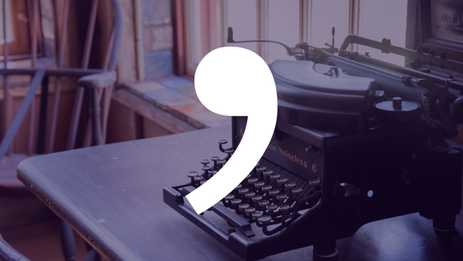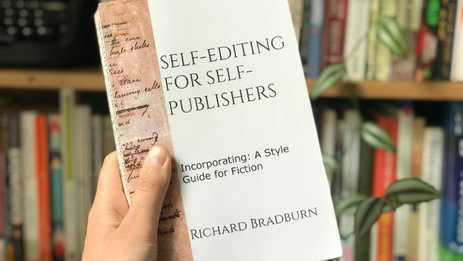A synopsis is a one-page summary of a novel, used to demonstrate the author’s story-crafting skills to a literary agent (or publisher). Some editors help their author-clients write these (either for a free or as part of their service), so let’s take a look at what you need to know.
Most publishers don’t accept manuscript submissions directly from authors, so if your author-client would like to follow the traditional route to publication, they generally need to sign with an agent.
The synopsis is one of the items an agent will ask an author to submit to them so they can decide whether they want to represent the author. The other items include a query letter and a sample of the author’s writing.
When writing a synopsis:
- Third-person present tense should be used
- It should be typed in a legible font with single spacing
- Names should be CAPITALISED when first mentioned
- The agent’s guidelines should be followed
Generally, a synopsis should fit comfortably on two A4 pages, but the length really depends on what the agent wants to see. The agent’s specified guidelines (usually found on the agency’s website) should let you know specifically what they’re looking for in terms of length. To save time and trouble, it can be a good idea for an author to prepare a few synopsises of varying lengths.
It’s a bad idea to try to cram more onto the page by using a tiny font or reducing the page margins. The whole point is the synopsis should be concise and easy to scan-read.
A synopsis needs to demonstrate a coherent plot and the emotional journey of the main character.
The plot will usually follow the three-act story arc (with an inciting incident at the beginning, rising action in the middle, and a climax and resolution at the end) and should give a sense of how the events of the story emotionally affect the protagonist.
If the author is writing literary fiction, their synopsis doesn’t matter too much because their writing style will be more important than the plot. But if they’re writing genre fiction, their synopsis is crucial in showing an agent they know how to structure an engaging story.
As you can probably imagine, writing a synopsis can also highlight potential problems in a plot. If the author is struggling to write a concise, logically connected summary of the events of their novel, they might find it isn’t yet ready to be submitted to agents.
Sometimes when I get the synopsis, it indicates that the story fizzles out, or it doesn’t continue as strongly as the opening chapters, or the characters don’t act consistently, or any other number of problems that make a book unsatisfactory.
Lindsey Fraser, Fraser Ross Associates (source: laurathomascommunications.com)
The 3 most important things to remember about synopsis writing
1. A book won’t be rejected based on the synopsis
It’s easy for authors to get overwhelmed when writing a synopsis. How on earth can you reduce the plot of a whole novel and all its nuances onto a page or two? In reality, you can’t – and agents know this. They won’t assess a novel’s potential based on the synopsis alone. They’ll look at the covering letter and sample pages, too, and if they see potential, they’ll ask to see the whole manuscript. What an author submits to them essentially gives them a sense of their novel and writing skills.
2. A synopsis is not back-cover blurb
A synopsis shouldn’t be written in persuasive sales language, nor should it withhold any major plot points. Remember, it’s not a teaser to entice readers to buy the book; it’s an informative document that will be read by literary professionals. Authors shouldn’t shy away from revealing their story’s juiciest moments!
3. A synopsis is not an outline
Writing an outline is a useful way of looking at the bones of a plot, but a synopsis needs to demonstrate more than that. A synopsis should elegantly show how the story works as a whole. Describing the events of the novel in the order in which they happen might not be the best way to do this. A synopsis needs to also mirror the style of the book; an outline doesn’t. If the synopsis doesn’t follow the chronology of the novel, it needs to be clear that this is the case. Authors should do what works best for their book.
The synopsis [is important] because it tells me what the author thinks the book is about and how they see it.
Jane Finigan, Lutyens and Rubinstein (source: writersandartists.co.uk)
What should a synopsis include?
THE MAIN STORY THREAD
Novels can be complex, and some contain multiple, interweaving story threads. Authors shouldn’t try to cram them all into their synopsis, spreading them too thinly. For the sake of clarity, one or two threads of the story might have to be left out. It’s better to do this and show clearly connected events than try to cover too much ground and end up with half-expressed ideas.
THE ENDING
Some writers are reluctant to give away the ending of their novels in their synopsis, but an agent really needs to know what happens at the end of the story if they’re going to be able to accurately assess the author’s story-crafting skills. The ending needs to be seen to thread back to the beginning of the synopsis so that the agent can see how the whole plot hangs together.
CHARACTER MOTIVATION
It’s crucial to convey character and motivation in a synopsis. Why do the people in the story act the way they do? And how does this shape the plot? It’s best to start with the main character. How do the events of the plot force them to change? This is the emotional arc of the novel. What motivates the supporting characters to initiate important plot events? Demonstrating this gives logic to the story.
THE POINT OF VIEW
The point of view (POV) used in the novel should be mentioned in the synopsis. The author doesn’t need to go into great detail, unless their synopsis doesn’t make sense without doing so – there’s no need to say where it switches if this happens often, for instance. This is one way an agent can get a better sense of how the novel is written.
A FLAVOUR OF THE NARRATIVE STYLE
If the novel is whimsical or serious, upbeat or melancholy, this should come across through the events and writing style without the author having to say so – but authors shouldn’t worry if their synopsis reads less artfully than their manuscript. They have to fit a lot of information into their synopsis, so that will have an effect on the writing style. They’re not trying to perfectly demonstrate their novel’s narrative style through their synopsis (their sample pages will do this better), but they can still provide a flavour of how their novel is written.
The point of a synopsis is not to explain much. It’s to show what happens. It is not intended to be lyrical beautiful writing.
Janet Reid, New Lead Literary & Media (source: jetreidliterary.blogspot.co.uk)
A MENTION OF THE GENRE
Clarify the genre at the start of the synopsis, even though this will have already been mentioned in the covering letter. It serves as a reminder and helps put the events of the story in context.
ANY IMPORTANT MISCELLANEOUS DETAILS
If the novel is set in a certain time period or special setting, this should be stated in the synopsis. If the novel is aimed at a certain age range, this should be stated, too – and the synopsis should be written at a similar reading level, using similar vocabulary. If there’s anything particularly unique about the way the novel is written, it should be briefly mentioned.
Things to avoid in a synopsis
There’s no need for the author to explain the mechanics of the story, e.g. ‘the themes are …’, ‘this is a story about …’, ‘the plots intertwine when …’. It’s unnecessary to do this and takes up valuable room!
Authors should avoid instructing readers how they should feel about the events of the story. Instead of using words like ‘heartbreaking’, ‘uplifting’ or ‘hilarious’, the plot should communicate the emotions.
Likewise, authors shouldn’t include questions aimed to tease the reader, such as ‘Will Anna save the day?’ and ‘Can Hector overcome his crippling self-doubt?’. This sounds hackneyed – and questions like this shouldn’t go unanswered in a synopsis anyway.
Authors shouldn’t be too wordy. Scrutinise the synopsis for clunky phrasing and repetition! How can sentences flow more succinctly? Edit, edit, edit.
What makes my eyes glaze over is an overly long synopsis of the story.
Alice Lutyens, Curtis Brown (source: curtisbrowncreative.co.uk)
Different ways of writing a synopsis
Some writers find forming their synopsis a piece of cake, while others might really struggle. I recommend authors set their manuscript aside for a few weeks before tackling writing a synopsis. This way they’re more likely to remember only the most important elements – which is exactly what the synopsis should focus on.
There’s no universal way to write a synopsis, but if your author-clients are struggling, you might want to suggest they try one or both of these methods:
CUTTING THE NOVEL DOWN TO SIZE
Write a detailed outline and remove all minor plot strands and characters. Rewrite what’s left so that it makes sense and the key events hang together logically. Keep cutting away less important bits until you’re left with something the right length for a synopsis.
BUILDING THE NOVEL UP FROM THE CORE
Start with your hook, then expand this to a paragraph that summarises the beginning, middle and ending. Flesh this out with the most important plot points that show how the main character gets from the start to the end of the story. Adjust the order of your paragraphs if necessary to make sure the synopsis flows artfully. Join up all the points and make sure there are no superfluous explanations included.
NOTE: I talk about how to develop the hook of a story in my post about query letters.
If your author is still struggling to know where to start when writing their synopsis, get them to answer the following questions. They’ll see their synopsis start to take shape:
- Who is the main character of your story?
- What does their normal, everyday life look like?
- What’s the inciting incident that propels the character into the story?
- What is your character striving towards? What’s their goal?
- What happens that makes it harder for your character to reach their goal?
- Who else helps or hinders them along the way, and how?
- Does your character hold true to their beliefs, or do they take a new approach? Does anything make them change their mind?
- What’s the event that sets the main character down an inevitable path towards achieving (or failing to achieve) their goal?
- How do they achieve (or fail to achieve) their goal? Does this change the character in any way?
- How is the character’s everyday life different now they’ve been through their experience? How are their relationships different?
What if the novel is the start of a series?
The author’s submission should focus on this first book that they’re pitching. If the novel could possibly lend itself to further books in a series, this should be mentioned in the covering letter.
If the author is unsure whether their book will be the first in a series, they should very briefly include their ideas for this in their covering letter. They could also send a shorter, separate synopsis for each of the books in the series to show the agent what they’re planning.
The agent may or may not be interested in these, but it doesn’t hurt to include them. The submission should focus on pitching the current novel, because if the author doesn’t do a good enough job of demonstrating their abilities with this one, an agent will have no reason to be interested in the rest of the series.
What if the novel is really, really long?
Firstly, consider whether the manuscript is too long. Does it need redrafting? Editing? Splitting into multiple volumes? The manuscript should be an appropriate length for the genre, and take into consideration that agents and publishers are less likely to take a chance publishing a huge tome by a new, unknown writer …
Regardless, just because a novel is long, it doesn’t mean the synopsis has to be. There might be several subplots (which can be left out of the synopsis) or there might be lots of obstacles that the protagonist has to overcome in the middle section of the novel (in which case, it’s simple to only mention the most crucial).
Remember, the synopsis doesn’t have to include every single plot point!
Where authors can find agents
Once your author has their covering letter, synopsis and sample chapters prepared, they’re ready to start pitching. First, though, they’ll need to decide which agents to submit to. They should ask themselves: ‘Is the agent reputable?’ ‘Are they taking on new clients and books in my genre?’ ‘Do they seem like a good fit?’
You can find agents in the following databases, but authors should always check out their website, too.
- Writers&Artists – https://www.writersandartists.co.uk/listings
- AgentMatch – http://www.jerichowriters.com/agentmatch
- Publishers Marketplace – http://www.publishersmarketplace.com
- Writers Market – http://www.writersmarket.com
- AgentQuery – http://agentquery.com
- Manuscript Wish List – http://manuscriptwishlist.com
A tricky business!
Authors often struggle with writing their synopsis. It’s certainly a challenge in itself, but it doesn’t help that they are so close to their own work that they can’t see the forrest for the trees – which is exactly what they need to do to write a good synopsis!
As an editor, you can help. And I hope this guide has helped you work out what you can do to help your clients.





